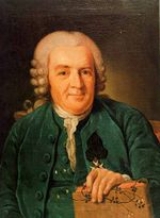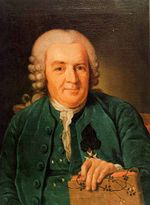
Muséum d’histoire naturelle d’Angers
Encyclopedia
Muséum d’histoire naturelle d’Angers is a French
natural history
museum in the Hôtel Demarie-Valentin, (dating from 1521) in Angers
. It contains 100,000 specimens and documents, including 2,500 birds, 20,000 molluscs, and 50,000 fossils. It also contains some meteorites that have hit France, such as Angers
and L'Aigle
.
 In 2007 the museum celebrated the tricentenary of the Swedish naturalist Carl von Linné. Poster.
In 2007 the museum celebrated the tricentenary of the Swedish naturalist Carl von Linné. Poster.
France
The French Republic , The French Republic , The French Republic , (commonly known as France , is a unitary semi-presidential republic in Western Europe with several overseas territories and islands located on other continents and in the Indian, Pacific, and Atlantic oceans. Metropolitan France...
natural history
Natural history
Natural history is the scientific research of plants or animals, leaning more towards observational rather than experimental methods of study, and encompasses more research published in magazines than in academic journals. Grouped among the natural sciences, natural history is the systematic study...
museum in the Hôtel Demarie-Valentin, (dating from 1521) in Angers
Angers
Angers is the main city in the Maine-et-Loire department in western France about south-west of Paris. Angers is located in the French region known by its pre-revolutionary, provincial name, Anjou, and its inhabitants are called Angevins....
. It contains 100,000 specimens and documents, including 2,500 birds, 20,000 molluscs, and 50,000 fossils. It also contains some meteorites that have hit France, such as Angers
Angers (meteorite)
Angers is an L6 meteorite that hit Pays de la Loire, France in 1822. The meteor struck at 8:15 PM on June 3rd. It has since been stored along with L'Aigle, another meteorite that struck France 19 years prior, in a room at the Muséum d’histoire naturelle d’Angers, a French natural history museum....
and L'Aigle
L'Aigle (meteorite)
-History:In the early afternoon of 26 April 1803 a meteorite shower of more than 3000 fragments fell upon the town of L'Aigle in Normandy . Upon hearing of this event the French Academy of Sciences sent the young scientist Jean-Baptiste Biot, to investigate that spectacular fall of stones...
.


